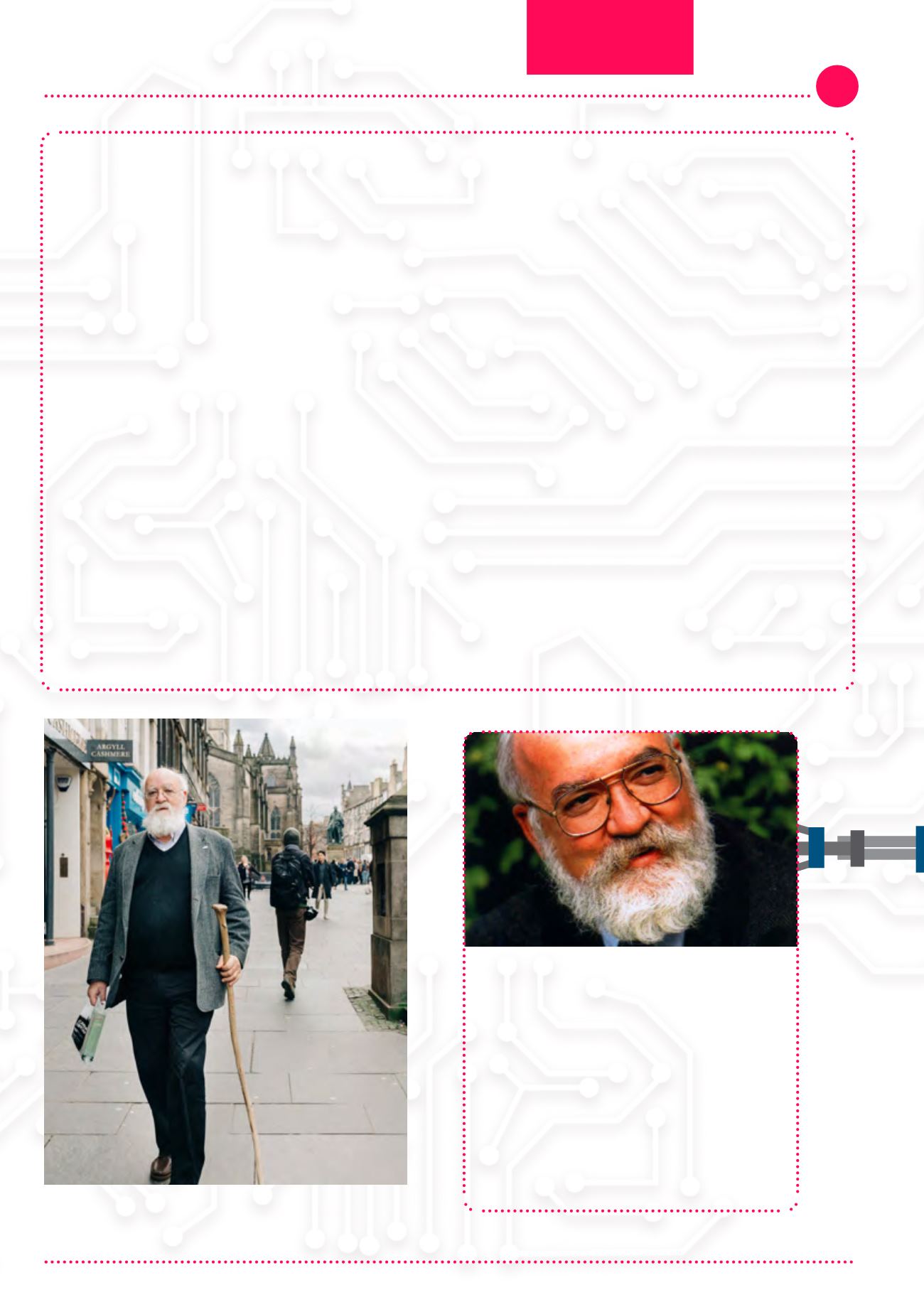

Formació AIQS
Formación AIQS
AIQS Training
43
AIQS
News
75
Further Readings:
Rodney Brooks and Lynn Andrea Stein. “Building
Brains for Bodies.”
Autonomous Robots 1
(1994):7-25.
The first published report on the Cog project, by its
directors.
Roald Dahl.
Kiss, Kiss
. New York: Knopf, 1959.
Antonio Damasio.
Descartes’ Error: Emotion, Reason, and
the Human Brain
. New York: Grosset/Putnam, 1994. A
distinguished neuroscientist’s imaginative model of
the human mind, based on clinical and experimental
evidence.
Daniel Dennett.
Brainstorms: Philosophical Essays on
Mind and Psychology
. Montgomery, Vt.: Bradford Books
and Hassocks, Sussex: Harvester, 1978. A collection of
philosophical essays on consciousness, psychology,
and artificial intelligence, including the extended-
thought experiment about brain duplication, “Where
Am I?”
Daniel Dennett. “The Practical Requirements for
Making a Conscious Robot.”
Philosophical Transactions
of the Royal Society
A, 349 (1994):133-46. A discussion of
the philosophical implications of Cog, by the project’s
resident philosopher.
Daniel Dennett.
Darwin’s Dangerous Idea
. New York:
Simon & Schuster, 1995. An analysis and defense
of evolutionary theory that claims that we are not
just descended from robots (macro molecules) but
composed of robots.
Douglas R. Hofstadter.
Godel, Escher, Bach: An Eternal
Golden Braid.
New York: Basic Books, 1979. A classic
series of reflections on the nature of the mind,
computation, and recursion.
Roger Penrose.
The Emperor’s New Mind: Concerning
Computers, Minds, and the Laws of Physics
. New York:
Oxford University Press, 1989. A mathematical
physicist’s attack on artificial intelligence, based on
Godel’s theorem.
John Searle. “Minds, Brains and Programs,”
Behavioral
and Brain Sciences
3 (1980):417-58. The notorious
Chinese Room thought experiment, purporting to
show that artificial intelligence is impossible.
Alan Turing. ACE
Reports of 1946 and Other Papers
. Ed.
B. E. Carpenter and R. W. Doran. Cambridge: MIT
Press, 1946. A collection of the amazingly fruitful
and prescient essays on computers by the man who,
more than anybody else, deserves to be called their
inventor.
Daniel C. Dennett is University Professor
and Co-director, Center for Cognitive
Studies, at Tufts University in Medford,
Massachusetts, USA.
He is the author of many books, including
DARWIN’S
DANGEROUS
IDEA
and
CONSCIOUSNESS EXPLAINED, and over 400
scholarly articles in philosophy, cognitive
science, and evolutionary theory.
His latest book is INTUITION PUMPS AND
OTHER TOOLS FOR THINKING.
Daniel C. Dennett in Edinburg. March 20th, 2015 © Adrian Popan,
a Belgium-based photographer


















